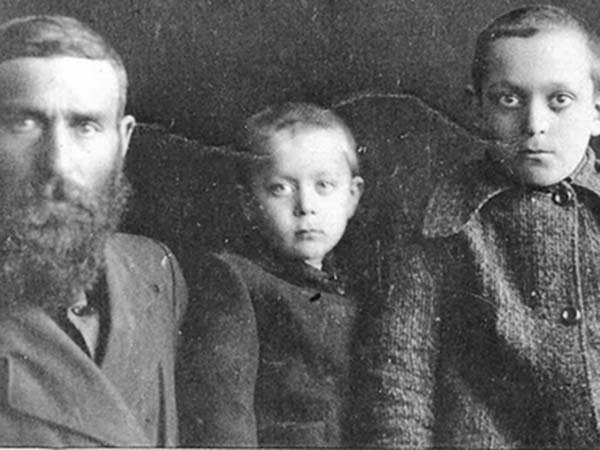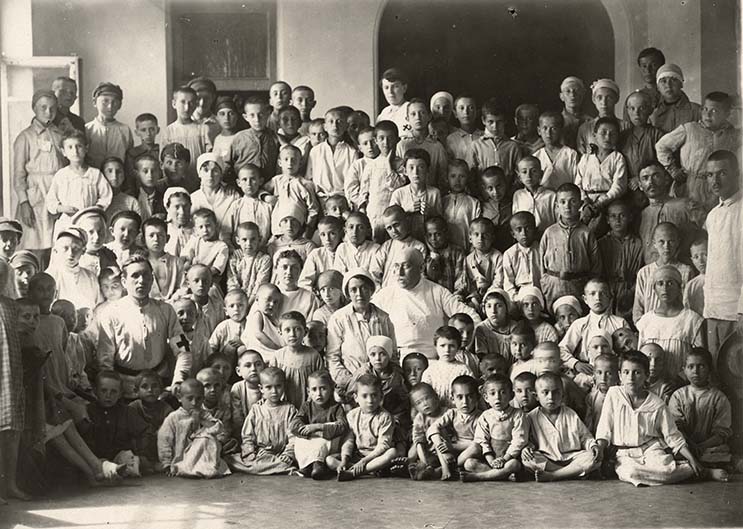
Old World Discoveries
Shtetl reports reveal little-known horrors
When Natalie Blitt happened upon a JDC report on pogroms in Polish (i.e., western) Ukraine, events which upended and took many lives in October 1919-July 1920, she was reeling, and posted to Facebook:
TFW [that feeling when] you randomly decided to search the JDC (Joint Distribution Committee) website for an alternate spelling of your grandparents’ tiny shtetl and discover a 103-page document outlining the pogroms of 1919-1920 throughout the area, and find their town listed and your great-great-uncle, Don Larber (age 60), named as one of those murdered.
And this all happened a few hours after I was listening to an interview I’d done many years ago with my grandmother where she talked about her mother hiding her under her skirts during this pogrom.
JDC workers reached Poland in 1919. They witnessed political and military upheavals in the newly created state and sent over 150 reports to New York Headquarters describing events occurring not only in major centers (Warsaw, Vilna, and Lviv) but in individual towns as well. In addition to these reports, the JDC Archives contains many other sources on this period: statements by Polish officials and organizations, reposts of the local Jewish press. While the JDC staff’s mission was to protect the Jews in the pogrom areas, in truth they were only able to monitor the situation and provide relief.
The report Natalie found reveals, in graphic detail, what have been called “the largest and bloodiest anti-Jewish massacres prior to the Holocaust.” Over 100 pages of devastating narrative, much of it verbatim eyewitness accounts, shed light on pogroms perpetrated in a total of 43 shtetls in today’s Ukraine and Belarus. Reaching a total of 13,400 deaths, the report includes lists of names of many of the pogroms’ victims, as well as those who died from the typhus epidemic which ensued. Common to almost all of the testimonies given by inhabitants of the various shtetls are pastoral beginnings: “Before the war the Jews and gentiles in our town lived in harmony” and resolute endings, “The witness plans to move to America.” Blitt’s family history demonstrates that not all left in the wake of these events. A short exchange with Blitt follows.
What is the name of your grandparents’ shtetl?
NB: My dad’s parents lived in a tiny shtetl called Datyn, in northwest Ukraine (between Kovel and Ratne).
Your family stayed in Datyn after the pogrom. When did they leave?
NB: Because of their geographic position, World War II didn’t start in their shtetl until the middle of 1941 when Germany invaded. My grandparents and their three-year-old son Meyer fled into the forest and lived there except for a short time in July 1942 when my grandmother gave birth to my father, in her father’s house. The day of his birth was their final day in the town.
They joined the Russian partisans, but their family who couldn’t fight were hidden, including my great grandparents and now five-year-old Meyer. In 1944, their group was discovered and killed. My father (still a baby) was hidden with a different family and miraculously survived the war. My grandparents survived as well. They eventually reached a DP camp near Munich and later moved to Calgary, Canada.
How did finding the report about the pogroms enrich your understanding of your family’s history?
NB: It had an enormous impact. Because the shtetl is so small and rural, it rarely comes up in the extensive research I’ve done into their lives. Sometimes I can find mention of the town in the records from the DP camp or in immigration documents, but I could not believe I found mention of it in a prewar historic document since few records survived the war.
Natalie found mention of family friends in the “Wohlynian JDC Report, October 1919-July 1920,” JDC Archives, item ID 226311.
NB: When I found Datyn mentioned (at the top of page 8, see above), I was shocked to find names that I recognized among the victims. “Leivant,” “Steinberg,” and “Tucks” [sic] were the last names of my grandparents’ best friends who also went into the forest with them. “Larber” [sic] was my grandmother’s maiden name and “Abrask” [sic] was the last name of my great-grandfather’s brother-in-law, ultimately the people who helped sponsor them to leave Germany after the war. Everyone mentioned was someone whose family was familiar to me.
In addition, just before she died, my grandmother had talked to me about a pogrom that took place when she was a young girl, which would match the dates of the pogrom discussed in the report.
Other reports of life in Europe in this time period are available via the finding aid to the JDC Archives 1919-1921 collection, in the Countries and Regions subcollection. Family researchers can browse the collection and search for names of shtetls and individuals. These resources offer insight on day-to-day life in Eastern Europe, and JDC’s relief work, in the post-World War I era.
This story was shared with the permission of Natalie Blitt, who lives with her family in Skokie, Illinois, writes young adult fiction, and is on the senior staff of The iCenter.






